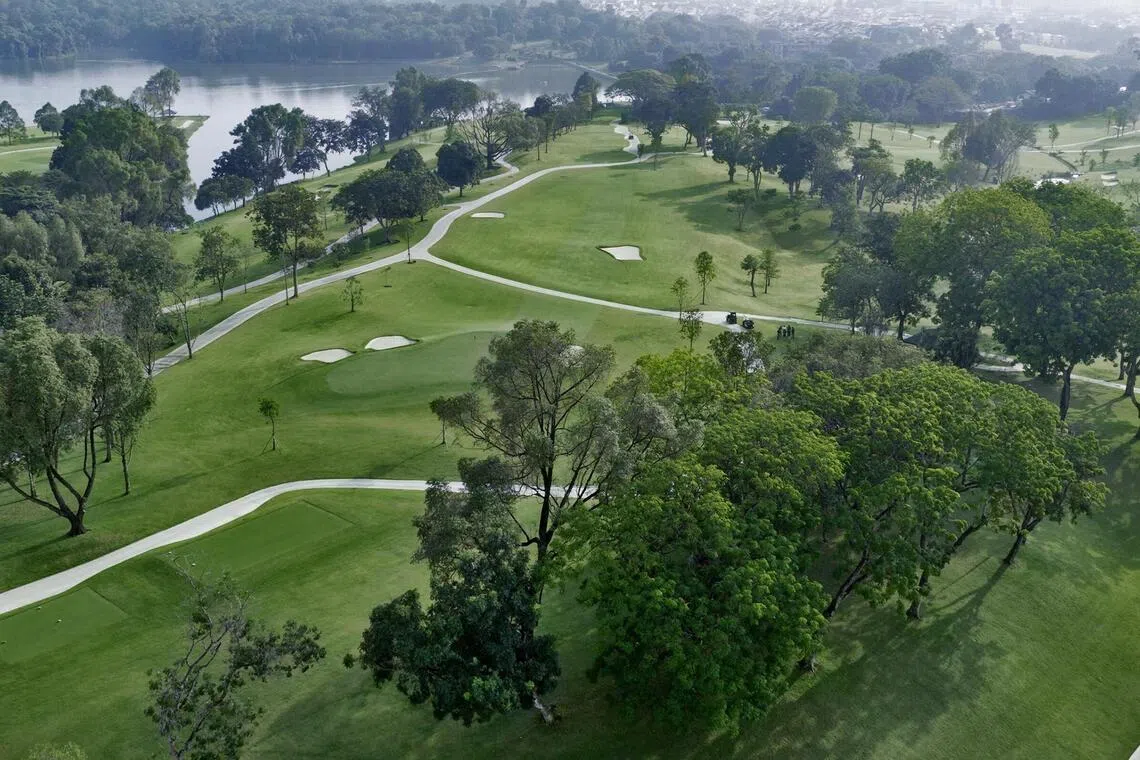SICC’s Island course redesign is a major investment for golfing
Sign up now: Get ST's newsletters delivered to your inbox

The picturesque aerial view of Hole 7 of the SICC’s newly redeveloped Island course.
PHOTO: SICC
Godfrey Robert
Follow topic:
I have a special affinity for The Singapore Island Country Club’s (SICC) Island course for it was among the few layouts on which I had my first lessons in golf reporting.
As a rookie reporter in 1970, I was asked to accompany my then senior, the erstwhile Ernest Frida (national athlete and sportswriter), to pick up tips on covering golf events.
So armed with a notebook filled with golfing terms, I watched star golfers such as SICC teaching professionals Alan Murray and Chang Chung Fa swing away for 18 holes at the hilly Island course.
I was captivated by the beauty of the relatively short course, one so very familiar with former Putra Cup champion Phua Thin Kiay, who once lived a wedge-distance from the par-four 13th hole.
Phua, 78, who has since retired, said: “The Island is a fascinating course, short but tricky, stuffed with slopes that tested one’s stamina. I shot my best-ever score of seven-under 65 on this rugged course.”
As Phua reminisced about the course, I wondered about how the Scottish architect Peter Robertson had turned this natural terrain of rough vegetation in a catchment area amid a tranquil setting into a challenging course that was both pleasing and intimidating.
Many major events had been staged on the Island course, but the most memorable was the first Singapore Open in 1961, won by Frank Phillips by a massive eight shots over his Australian counterpart Darrell Welch.
Former world No. 1 woman golfer Tseng Ya-ni launched her professional career after her triumphs in the 2001 and 2002 SICC junior invitational at the Island course.
The character of the rugged Island course had not changed since its debut in 1932. It was so because it never had a major reconstruction until the early 2000s when five-time British Open champion Peter Thomson introduced enhancements to preserve the course’s essence while adapting it for contemporary play.
By 2021, with advancements in golf technology, evolving member expectations and an increased focus on sustainability, the need for a comprehensive redevelopment became clear.
The guiding vision was to preserve heritage while future-proofing the course, integrating safety, playability and eco innovation.
The redevelopment also embraced innovative ecological solutions
More than 90 per cent of the flora was replanted with native species to strengthen biodiversity corridors, while fallen trees were thoughtfully repurposed into tee markers, buggy exit signs and distance markers.
The redesigned course delivers an 18-hole experience where strategy meets scenery at every turn.
As my flightmate, Singapore Pools’ chief product officer Simon Leong, with whom I played a round on Sept 17, said: “There was thinking behind the redevelopment. Ideas were well executed resulting in a well-designed course.”
“It is one we can call our own in Singapore, and a major addition for championship challenges.”
The opening dog-leg right par-five hole, originally a short par-four, welcomes with deceptive ease, while Hole 3 tempts bold hitters with a risk-reward par-five at the reservoir’s edge.
At Hole 15, players pause by the Weeping Fig Tree planted in memory of the late Neil Haworth – whose company is regarded as one of Asia’s most established golf architects and was the prime mover of the redevelopment – as a silent tribute.
The closing stretch intensifies, peaking at the amphitheatre-style Hole 18, a true tournament finisher built for spectators and legacy moments.
Emeritus Senior Minister Goh Chok Tong was the guest of honour – alongside 80 distinguished invitees – at the official opening of the Island course on Sept 17.
Ivan Chua, chairman of the Island Golf Redevelopment Project Committee, said: “We set out to honour the soul of the Island course, its history, its natural beauty, its place in the hearts of members while reimagining it for the demands of modern play.”

